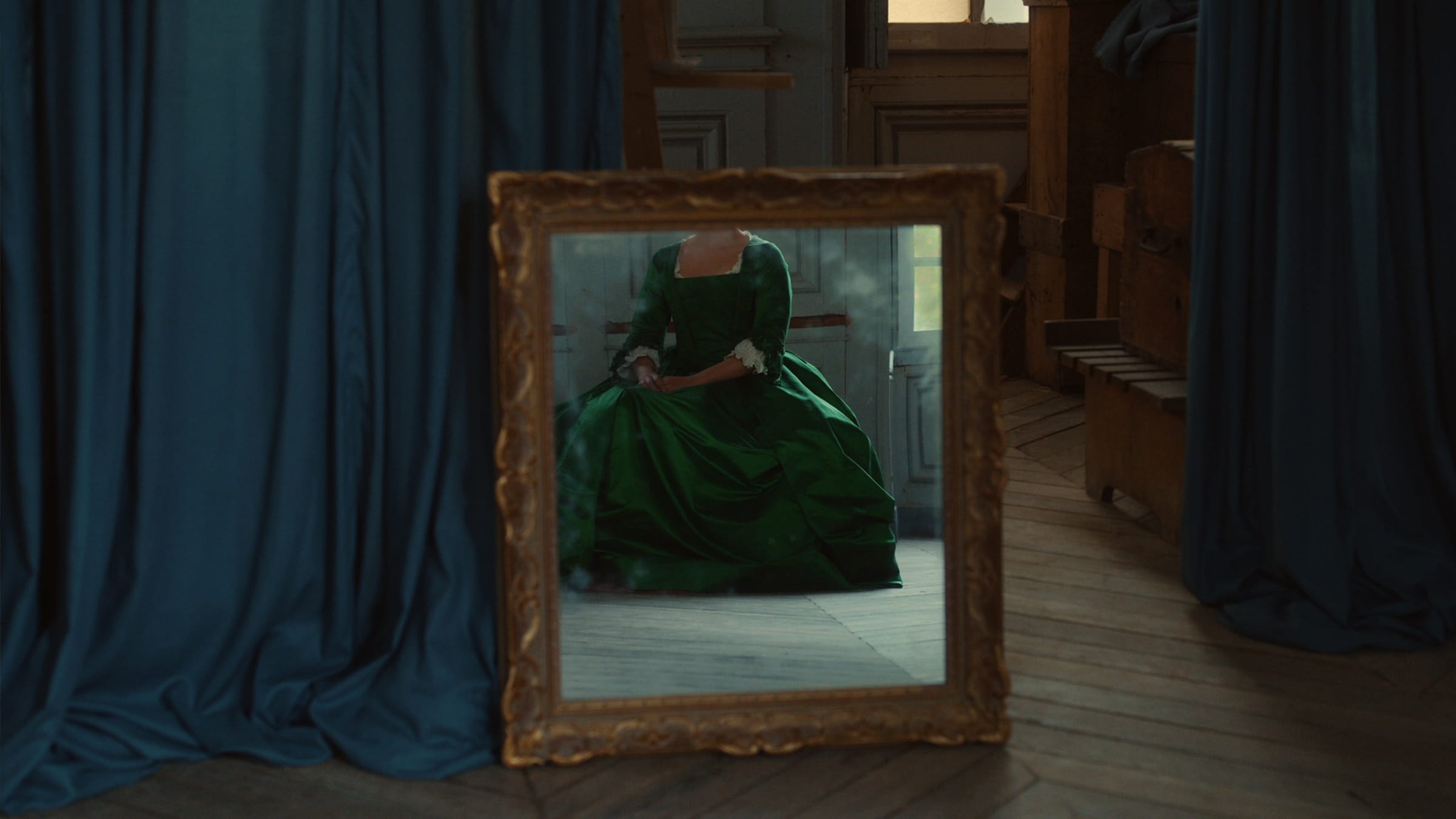Published in Cinema Skyline, Vol. 5 (October–November 2019)

If you are a person who regularly peruses alternative-media film zines, there’s a good chance you’ve heard something about the male gaze. It’s rampant these days, in both critique and practice, and, like the concept of whiteness or sexism generally, it is a way of describing power structures while doing very little to pin them down. Some of the best criticism right now is coming from perspectives pursuant of ‘another gaze,’ which is a boon to us all. But the problem stands for the time being that we are better at fixating on the male gaze than we are at forgetting about it.
If you are a person looking to forget all about the male gaze the next time you watch a movie, I would suggest Celine Sciamma’s Portrait of a Lady on Fire. Screened this year Cannes’ Official Selection, and later at NYFF’s Main Slate, there is nothing chicly ‘indie’ or overtly subversive about Sciamma’s fourth feature. It is, quite straightforwardly, a queer love story, at times playful and eventually devastating, which takes place in a period before queerness was widely acknowledged and accepted (if such a period has ever existed to date). In all of these respects, it has something in common with Call Me by Your Name (2017), which I’d like to think we can at this point size up as a watershed moment for queer cinema, at least in terms of capturing mainstream attention. Members of the queer community who found Call Me by Your Name not radical enough will likely look similarly askance of Portrait, because both projects tend to stake their claims in a praxis of quiet self-assurance rather than plainly politicking. Sciamma’s film, however, is the stronger of the two—both in providing a fantasy and perpetrating a reality.
We open on Marianne (Noémie Merlant) in a small lifeboat en route to a secluded Mediterranean island. Her rower is one of maybe four men ever seen onscreen, none of whom have major roles. Marianne is a painter, taking after her father, and is voyaging on commission for a wealthy Comtesse (Valeria Golino) who has asked that the artist render a proper portrait of her daughter, Héloïse (Adèle Haenel), a maiden on the cusp of marriage, who has dismissed every artist to come near her thus far. The estate is limited to the three of them, plus a maid. If you can’t tell by now, the idea of a Bechdel Test—or a cinema which might require one—has little place here.
The Comtesse away, Marianne begins setting about her work, at first without a willing subject to work with. Héloïse has cloistered herself somewhere in the estate, and for a while all we get are Marianne’s encounters with her failed likenesses—demonstrative more of frustration by the male artists who tried to paint her rather than the woman herself. Fleeting glimpses of Héloïse are dangled before the viewer as a promise of visualization that Haenel, in her role, must live up to, and graciously does. I should probably mention that Haenel and Sciamma have worked together since the latter’s debut, and were themselves lovers until 2017 (about the time production began for Portrait). At this point still a reliquary of French cinema, Adele Haenel is the life force of this film, and deserves a place of international recognition for her performance here.

Marianne, who substitutes her gaze for the viewer’s, begins painting a portrait of Héloïse that naturally ascends into a testament of infatuation and rapture, and the most remarkable part of this encounter is its depiction through camerawork. Sciamma is fully aware of the desires and insistencies of her audience and toys with us as the two women toy with one another, playing a game of framing—of hide-and-seek—around the main touchpoint of the commissioned portrait. Naturally they fall in love, but most gratifyingly the game of hide-and-seek does not end there, but begins anew, as the politics of gaze and disappearance are taken to full extension. There are many shots of Portrait of a Lady on Fire that I can still visualize—despite having last seen it at the Lumiere theater in Cannes last July, where it received standing ovation. Particularly memorable are scenes which include a delicately angled mirror, reflecting back our way. Marianne’s gaze is Sciamma’s gaze is ours, and Haenel offers herself up to all as a subject both displayed and reserved, together and apart.
The film’s final shot, which is more durational than expected and comes after you might think it’s over, is nothing short of a tour de force on the part of Haenel, and unites every kind of looking utilized by this immaculate film into a single focal point: her. It’s a reminder of the very reason we go to the cinema—not just to gaze but to see, as if for the first time. ︎